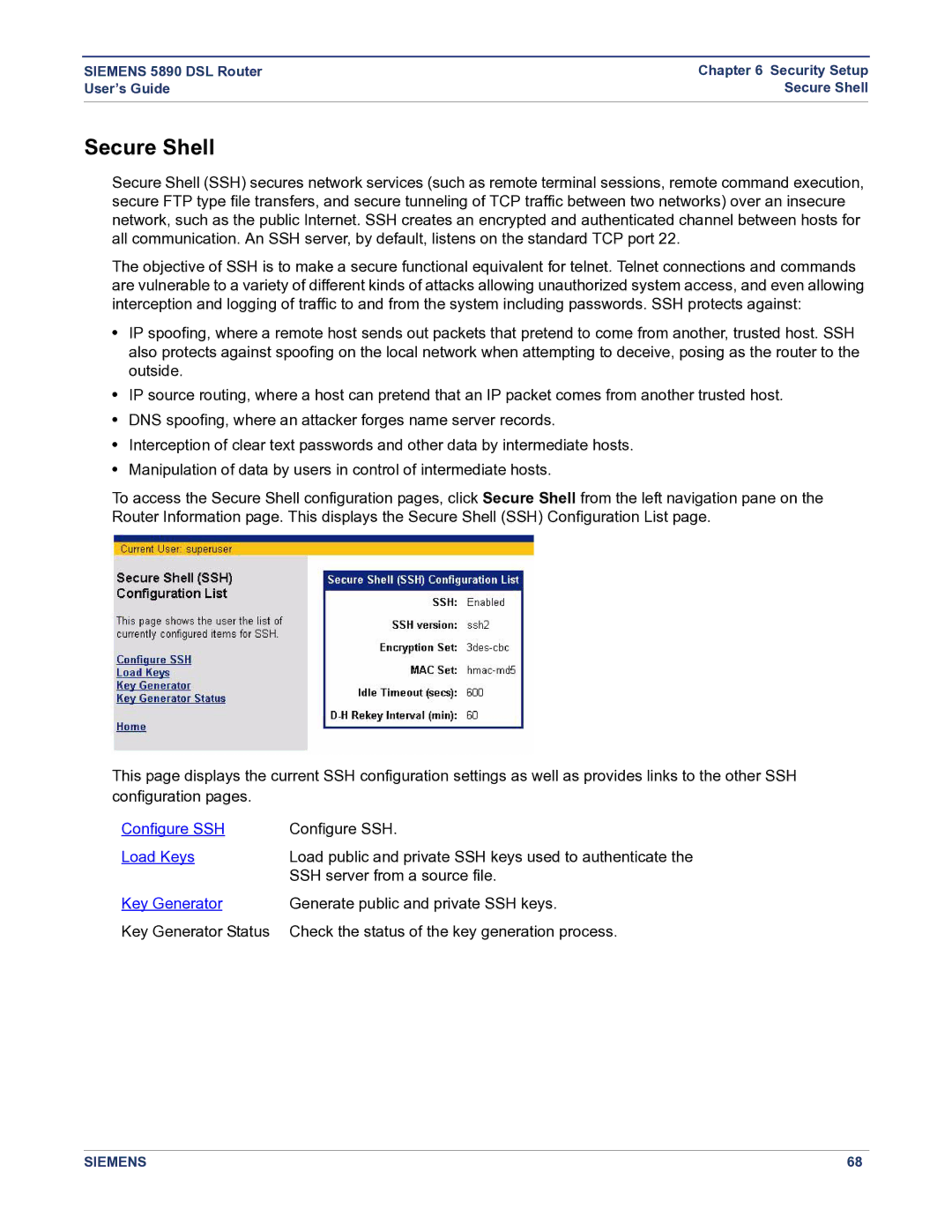
SIEMENS 5890 DSL Router | Chapter 6 Security Setup |
User’s Guide | Secure Shell |
|
|
Secure Shell
Secure Shell (SSH) secures network services (such as remote terminal sessions, remote command execution, secure FTP type file transfers, and secure tunneling of TCP traffic between two networks) over an insecure network, such as the public Internet. SSH creates an encrypted and authenticated channel between hosts for all communication. An SSH server, by default, listens on the standard TCP port 22.
The objective of SSH is to make a secure functional equivalent for telnet. Telnet connections and commands are vulnerable to a variety of different kinds of attacks allowing unauthorized system access, and even allowing interception and logging of traffic to and from the system including passwords. SSH protects against:
•IP spoofing, where a remote host sends out packets that pretend to come from another, trusted host. SSH also protects against spoofing on the local network when attempting to deceive, posing as the router to the outside.
•IP source routing, where a host can pretend that an IP packet comes from another trusted host.
•DNS spoofing, where an attacker forges name server records.
•Interception of clear text passwords and other data by intermediate hosts.
•Manipulation of data by users in control of intermediate hosts.
To access the Secure Shell configuration pages, click Secure Shell from the left navigation pane on the Router Information page. This displays the Secure Shell (SSH) Configuration List page.
This page displays the current SSH configuration settings as well as provides links to the other SSH configuration pages.
Configure SSH | Configure SSH. |
Load Keys | Load public and private SSH keys used to authenticate the |
| SSH server from a source file. |
Key Generator | Generate public and private SSH keys. |
Key Generator Status | Check the status of the key generation process. |
SIEMENS | 68 |
